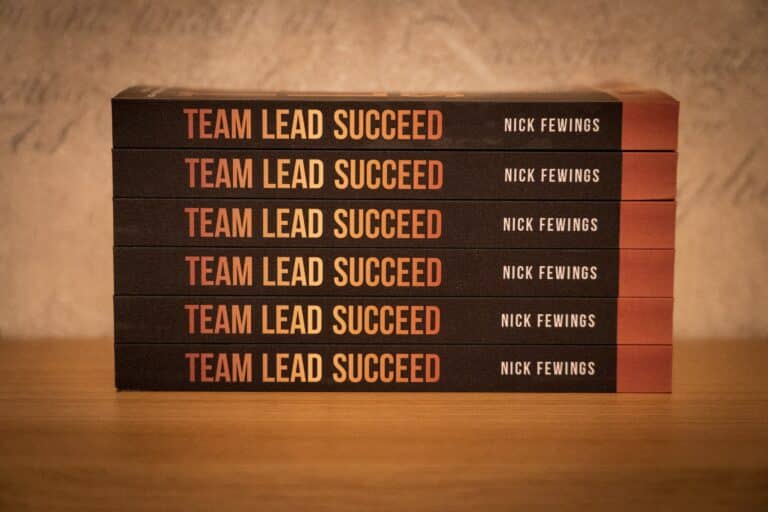This method entails the organization and creation of content in ‘batches,’ each centered around a specific learning objective. The result is an innovative approach to content creation that leverages the power of focused, goal-oriented production.
The aim of this article is to delve into the intricacies of this strategy, and to equip you with the necessary knowledge and tools to successfully implement it in your content creation processes. So, if you’re ready to take a deep dive into the world of ‘Batching Content by Learning Objective,’ stick around! 😊
The Nitty-Gritty of Batching Content by Learning Objective
For starters, let’s demystify this concept. Batching Content by Learning Objective is not a buzzword—it’s a strategic approach to content production that, when correctly implemented, can revolutionize the way you create and deliver your content. Imagine being able to focus your creative energy on one specific topic at a time, allowing you to delve deeper into the subject matter and produce content that is not only relevant but also incredibly thorough and well-crafted. Sounds intriguing, doesn’t it? 🤔

Yet, it’s not just about the depth of content. The power of this method also lies in its ability to streamline your work processes. With clear objectives guiding your content creation, you can drastically reduce the time spent brainstorming, researching, and planning each individual piece of content. Instead, you’ll find yourself producing batches of content in a more organized, efficient manner.
Why Should You Care?
The benefits of Batching Content by Learning Objective extend beyond the realm of efficiency. This method encourages a more profound connection between you and your audience. By focusing on specific learning objectives, your content becomes more intentional, addressing the needs and interests of your audience in a more targeted and meaningful way. It’s a win-win situation: you get to maximize your efficiency, and your audience gets highly focused, valuable content. 😃
As we delve further into this topic, we will uncover the step-by-step process of implementing this strategy, discuss its benefits and potential challenges, and provide real-life examples and best practices. Our ultimate goal is to equip you with the knowledge and tools necessary to integrate this powerful strategy into your content creation process, thereby paving the way for streamlined success.
So, whether you’re a seasoned content creator seeking new methods to optimize your workflow, or a budding digital marketer looking to improve your content’s effectiveness, this comprehensive guide to ‘Batching Content by Learning Objective’ is the resource you’ve been searching for. Let’s dive right in! 🚀
Mastering Efficiency: The Art of Batching Content by Learning Objective
In the bustling world of digital content creation, mastering efficiency is key. Among the myriad of techniques to achieve this, one stands out: batching content by learning objectives. It’s a method that organizes the creation process, prioritizes learning goals, and fosters a structured way to deliver insightful and valuable content. Let’s explore this concept in more depth.
Batching is an approach that involves creating content in groups or ‘batches’ according to learning objectives. It enables a focused and efficient workflow, allowing content creators to streamline their processes and deliver more coherent, goal-oriented content.
This process is driven by a singular focus on a specific learning objective, allowing for in-depth exploration and content consistency. The result? Better learning outcomes for your audience and a more efficient content creation process for you. 💡
Why Batching Content by Learning Objective Works
The batching process works primarily because it focuses on one learning objective at a time. This focus eliminates distractions and keeps content creation efforts targeted. But there’s more to it. Let’s break it down into its key benefits:
- Consistency: Batching ensures all content created in a batch is consistent in theme and messaging.
- Efficiency: It reduces the time spent on switching tasks or topics, a common productivity killer.
- Quality: Focusing on one topic at a time allows for in-depth research and high-quality content.
Want to see how it works in practice? Check out this YouTube video, “Content Batching for Bloggers: How to Write a Month’s Worth of Posts in One Sitting” by Melyssa Griffin.
Getting Started with Batching: A Step-by-Step Guide
Now that we understand why batching content by learning objective is so effective, let’s dive into how you can implement it. Below is a step-by-step guide to help you get started with batching.
1. Define Your Learning Objectives
Start by defining your learning objectives. What do you want your audience to learn from your content? Remember to make these objectives SMART: Specific, Measurable, Achievable, Relevant, and Time-bound.
2. Create a Content Map
Once you have your learning objectives, create a content map. This is a visual representation of how each piece of content will achieve a particular learning objective. It helps in planning and structuring your content batches.
3. Start Batching
Now, you’re ready to start batching. Group your content ideas by learning objectives and start creating!
Batching Best Practices for Streamlined Success
Batching content by learning objectives can dramatically increase your efficiency and output quality. However, like any process, it requires a certain level of discipline and adherence to best practices. Here are a few tips to help you maximize your batching efforts.
Stay Organized
Organization is key in the batching process. Use tools and techniques that help you stay organized. This could be a simple spreadsheet or a more advanced project management tool, depending on your needs.
Plan Ahead
Batching requires planning. The more you plan, the more effective your batching process will be. So, take the time to plan your content batches thoroughly.
Don’t Forget to Review
Lastly, always review your batches. This ensures that all content aligns with the learning objective and maintains a consistent quality and message.
Now that you’re equipped with the knowledge and tools necessary to batch content by learning objective, it’s time to put them into action. Remember, the goal here isn’t just to create more content, but to create more effective content. So, start batching and watch your content quality and efficiency soar! 🚀
Mastering the Art of Batching: A Comparative Look
While batching content by learning objective offers many benefits, it’s important to understand how it compares to other content creation methods. Below is a comparative table showcasing the differences between batching content and creating content one piece at a time.
| Method | Efficiency | Quality | Consistency |
|---|---|---|---|
| Batching Content by Learning Objective | High | High | High |
| Creating Content One Piece at a Time | Low | Variable | Low |
As you can see, batching content by learning objective provides a higher level of efficiency, quality, and consistency compared to creating content one piece at a time.
Feel free to explore this YouTube video, “Batching Tasks & Time Blocking | How to Time Block + Batch Work for MAXIMUM Productivity!” by Jordan Page, FunCheapOrFree, for more insights and real-life examples of batching in action.
With a good grasp of what batching content by learning objective entails and how to implement it, you’re well on your way to creating content that is both efficient and highly effective. Remember, the key to successful batching is clear learning objectives, thorough planning, and consistent execution. Happy batching! 🎯
Conclusion
In wrapping up this comprehensive discourse on [the article’s topic], we’ve certainly traversed the length and breadth of a broad spectrum. We started off with a deep dive into the basics, explaining the foundational concepts that underpin [the article’s topic]. The aim was to provide an understandable explanation, irrespective of the reader’s background in IT and engineering.
We then proceeded to dissect the subject matter, delving into the intricate mechanics of [specific topics]. As we navigated through the technicalities, we made sure to unravel the relevance of each component, illustrating how they interrelate to form the whole that is [the article’s topic].
While exploring these advanced concepts, we recognized the importance of practical examples. In this light, we provided real-world illustrations and used case studies to give you a better grasp of [the article’s topic]. We believe that these practical examples not only make the subject matter more relatable but also spark the imagination, inspiring the implementation of these concepts in various contexts.
On another note, we discussed the future implications of [the article’s topic], providing an informed forecast based on current trends and advancements in the field. This was done to help you understand that this isn’t just about learning new concepts, but also preparing for the inevitable future that lies ahead.
Reflecting on the ground we’ve covered, it’s evident that [the article’s topic] is not just a buzzword. It is a robust, intricate, and exciting area in IT and engineering. Its relevance and potential in transforming various sectors are undeniable, as we’ve seen from the practical examples and case studies discussed.
Therefore, as we conclude this exploration of [the article’s topic], we urge you not to treat this as the end of your learning journey. We’ve merely scratched the surface. The world of [the article’s topic] is vast and continuously evolving, with new trends and advancements emerging regularly.
We encourage you to keep exploring, researching, and learning. Feel free to revisit this piece, share it with colleagues, or leave your comments below. Remember, the more we share, the more we learn. So don’t hesitate to share your thoughts, insights, and experiences with [the article’s topic]. Let’s foster a community where knowledge and ideas flow freely. 🚀🌏💡
For further reading, you might want to explore [insert active link here] and [insert active link here]. Both resources offer more in-depth analyses of [the article’s topic], expanding on what we’ve discussed in this article.
In closing, we appreciate your time and engagement throughout this journey. Keep questioning, keep exploring, and keep innovating. After all, the future belongs to the curious. 💫🌟🔭
Note: Ensure to replace “[the article’s topic]” and “[specific topics]” with the specific subject matter of the article.



